Suppress the vote and win
The Ontario PC Party and friends excelled at voter suppression during 2022 provincial election, getting Doug a second term
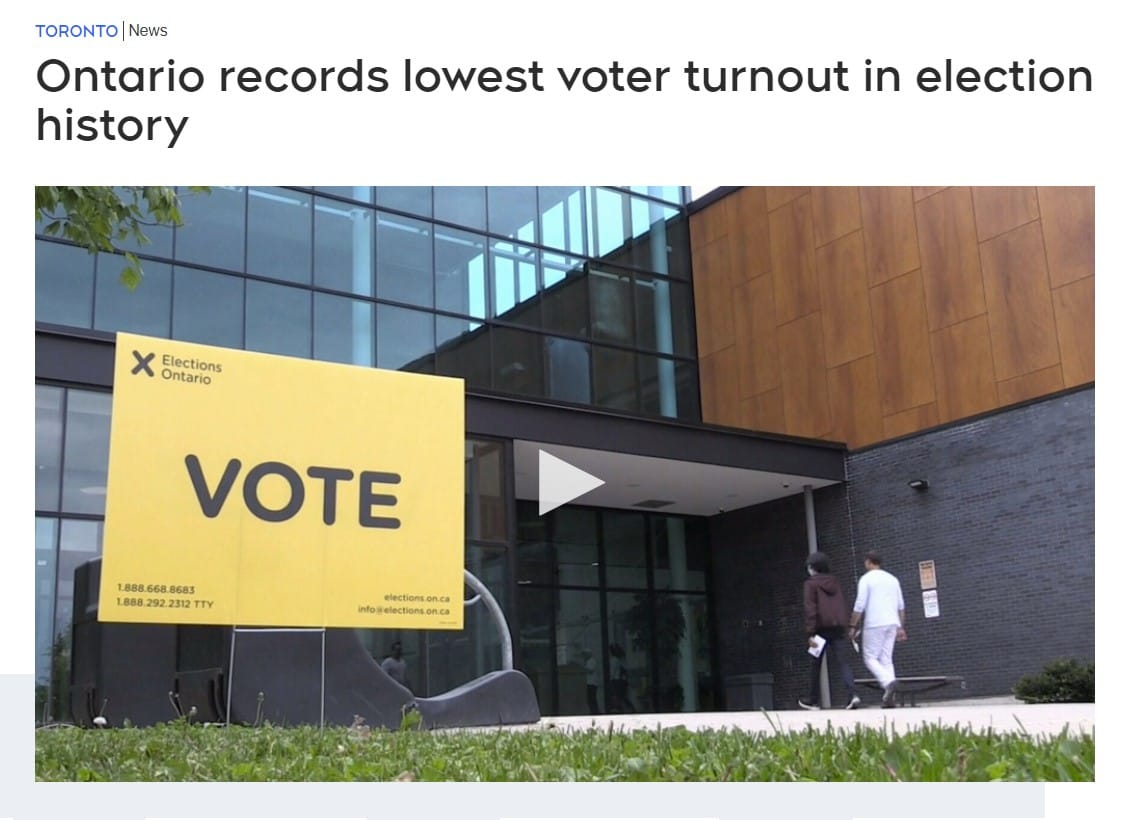
Shortly after the provincial election in 2018, the Ford government quickly introduced Bill 57, called, with deep irony, the Restoring Trust, Transparency and Accountability Act. The sweeping bill made changes to a long list of existing Acts including alcohol and gaming regulation, the lobbyist registry, Metrolinx, the ombudsman, Ontarians with disabilities, and dozens more. The bill received Royal Assent in December of 2018.
The bill included key changes to the Election Finances Act. As outlined by Cassels, the bill increased the maximum contribution that an individual person can make, and repealed a section governing the maximum amount a person could contribute at a fundraising event. It also repealed a requirement that donors certify the funds being donated are theirs and not from a third party.
The bill also repealed restrictions on attendance at fundraising events, meaning members and party leaders were now permitted to attend them. (This change kicked off a lucrative flurry of fundraising dinners and events which has seen MPPs, cabinet members and the Premier holding fundraisers frequently, sometimes in ridings they don’t even represent.)
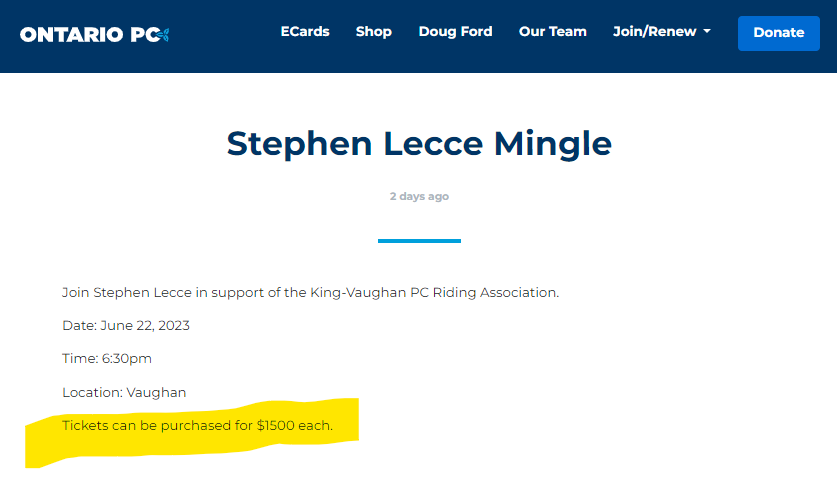
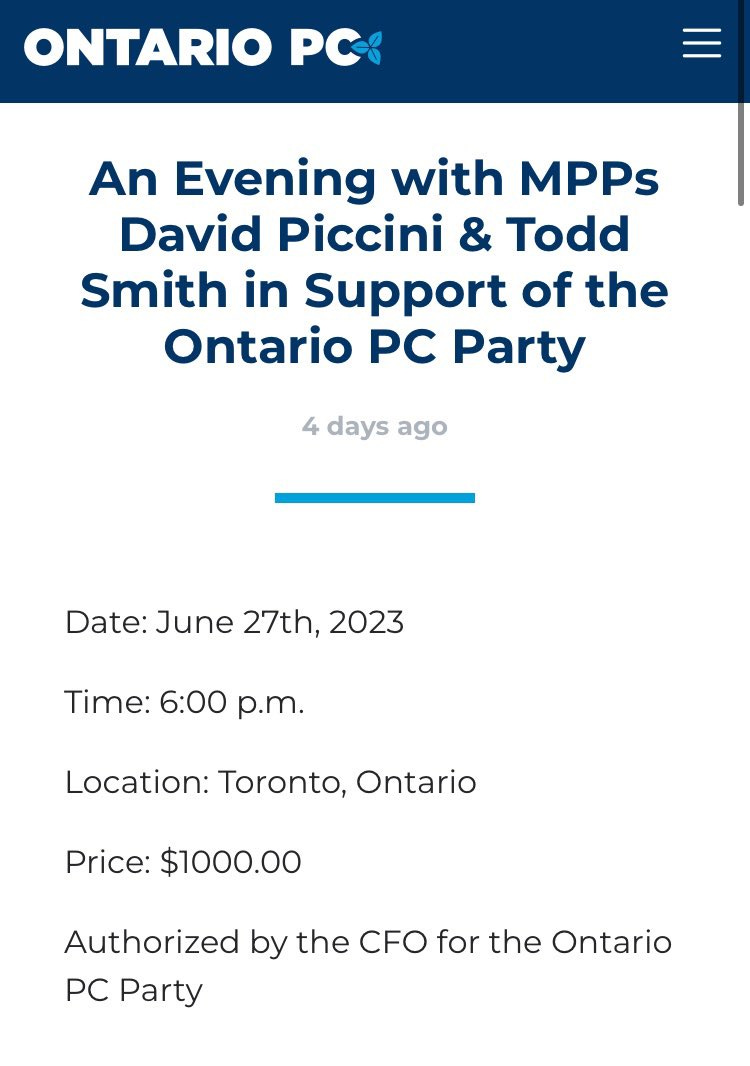
Having made party and candidate fundraising more lucrative, with fewer restrictions, the Ford government made additional changes related to Ontario elections in April of 2021. Bill 254, titled Protecting Ontario Elections Act, contained amendments designed to further restrict and limit political advertising and advocacy by anyone other than candidates and parties. Additionally, the Act further increased the amount individuals could donate to $9,900 annually, making it the highest limit in any Canadian jurisdiction.
This change in legislation super-charged PC party fundraising for over a year prior to election day. Indeed, a few months later the party was caught sending fundraising letters disguised as fake invoices, a move that prompted Essex MPP and NDP ethics critic, Taras Natyshak, to make a complaint to Elections Ontario for what she called “a phishing scam.”
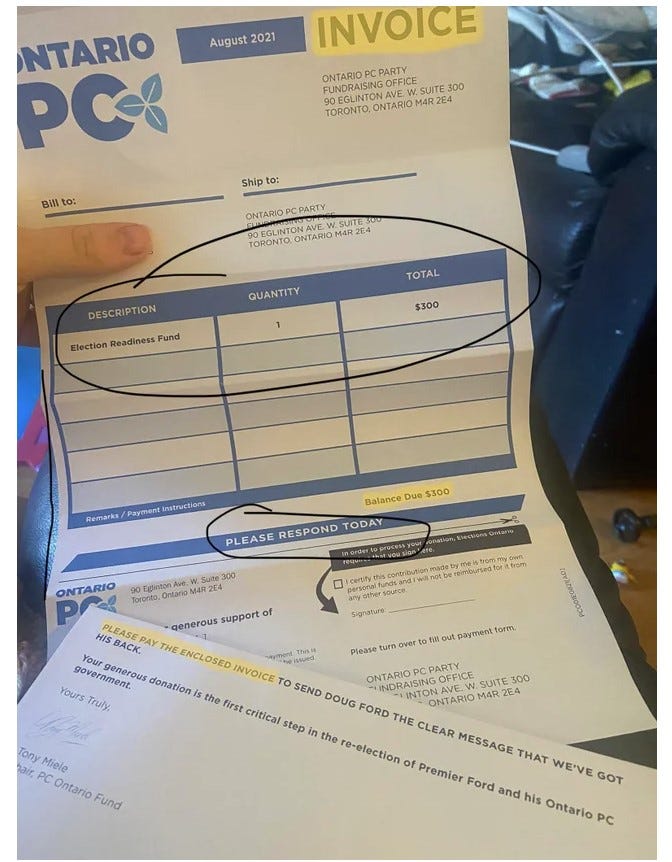
Other features of Bill 254:
- An expansion of the definition of “third party advertiser”, meaning more groups and entities were under restriction.
- Additional spending restrictions on third parties, including unions. Unions were previously restricted from spending on political advertising during the election period and for six months beforehand. Third parties were now restricted for a whole year before the election period.
- Third parties are restricted from advertising on political issues that are “closely associated” with any political actor, which was aimed at limiting unions from advertising about issues that might affect its membership, even without mention of any party or candidate.
- Even though third parties were restricted from advertising at all in the year leading up to an election, the act limited spending on political advertising annually to $637K, representing very little for an advertising campaign, especially in a large province like Ontario.
- New and onerous reporting requirements were imposed on third parties, including a requirement to provide a final report to Elections Ontario on their spending and contributions, and an interim report each time they commit to spending more than $1000 on advertising.
- Third parties were also restricted from interacting with each other, in a huge blow to groups organizing on collective issues. Third parties are restricted from sharing information with each other, or even using the same vendors.
Penalties for violations of the Act are steep, especially for organizations which work with and for vulnerable and low income people. Entities can be fined up to $100,000 for infractions.
Collectively, the bill essentially and effectively silenced organized dissent in Ontario, and limited the ability of organizations to present their issues, alternatives and narratives to the public for a year leading up to the next provincial election.
By contrast, third party advertisers spent more than $5M on campaign-related activities in the lead up to the 2018 provincial election that put Ford in office. The biggest spenders by far - Ontario Proud, the Ontario Medical Association and the Ontario Real Estate Association - were aligned with Ontario PCs through party leadership, donations and lobbyists. The new spending limits created a way for the Ford government to limit any third-parties from organizing and spending in a similar way against him, ensuring no candidate coming after him would enjoy the same benefits during a subsequent election.
In early June of 2021, Justice Ed Morgan of the Ontario Superior Court struck down portions of the election financing law, based on a legal challenge by groups including the Elementary Teachers’ Federation of Ontario (EFTO), the Ontario Secondary School Teachers’ Federation (OSSTF) and Working Families Ontario, a union-funded organization.
Just a week later, the Ford government called back members during their summer break and pushed the bill through the legislature anyway, despite the court ruling. After a marathon weekend debate, the Ford government invoked the notwithstanding clause to pass the bill. The rarely-used clause allows legislatures to override portions of the Canadian Charter of Rights and Freedoms for a five year term.
Initial reactions from the parties involved in the legal challenge were scathing, and all vowed to continue the legal challenge. The head of the Canadian Civil Liberties Association (CCLA) called the Ford government move “a day of infamy for Canada’s constitution.” Patty Coates, president of the Ontario Federation of Labour (OFL) was quoted in a CBC article:
"The freedom to peacefully express dissatisfaction with the government is a principle that must never be bent. The Bill that Ford's Conservatives rammed through today, after it was already deemed unconstitutional, attempts to do just that. It's simply an end-run on our democracy and it is unacceptable. We won't forget this government's self-serving attempt to silence critics and rig the next election in their favour."
Though the use of the notwithstanding clause by Ford was historic and controversial, media response was unusually muted and limited. The government’s effort to keep a lid on the issue was assisted by the fact the bill was debated over a weekend during the legislature’s summer break, passed on a Monday, and then legislature break resumed. MPPs faced few questions from anyone.
The result, for the Ford government, was a legislated chill on any organized criticism of its government, from June of 2021 straight through to the provincial election in June of 2022. The goal, for the ruling PC party, was to have as “quiet” an election as possible - indeed, the party released no platform before the June 2022 election, its candidates did not participate in debates, and Ford held no public events, keeping as far away as possible from potential voters and reporters.
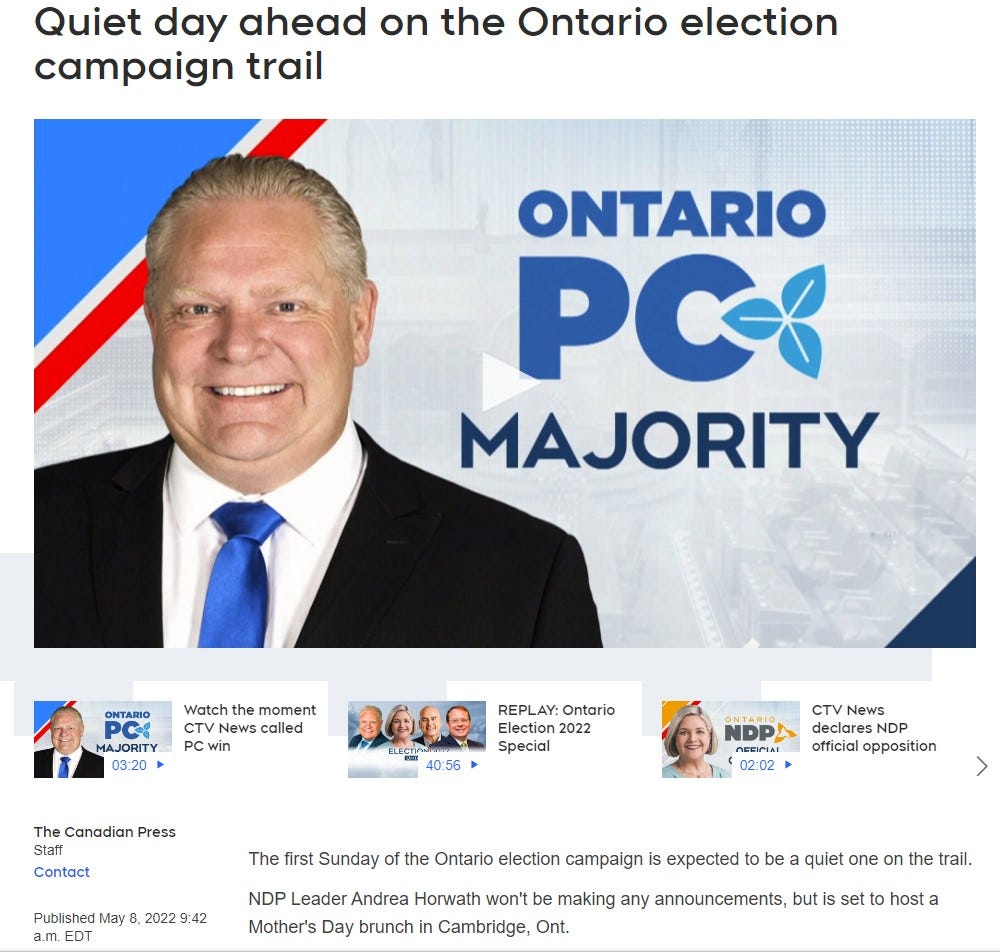
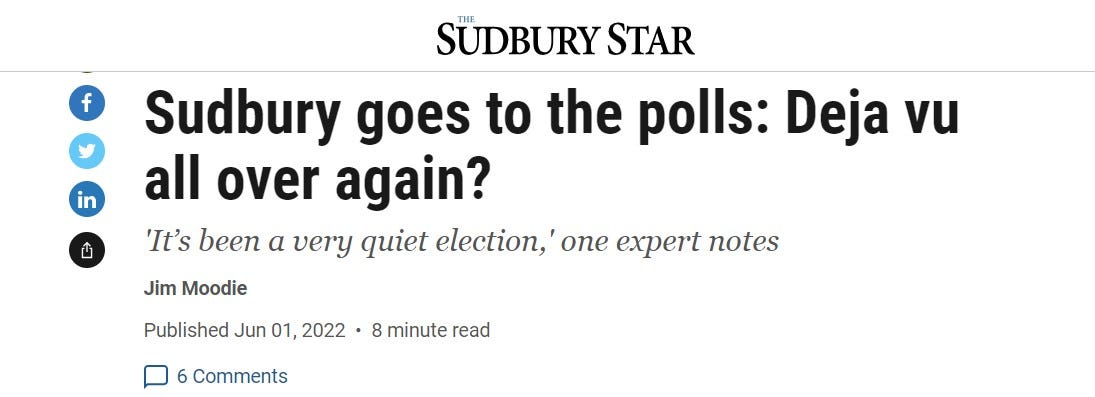
The strategy was to keep the election from becoming an issue or a topic of conversation at all, so the incumbents could coast to re-election as quietly as possible. By suppressing the vote, Team Ford hoped to keep young voters from realizing there was an election on (young people generally don’t vote PC), and to generally discourage anyone who might vote for other candidates.
The strategy was incredibly successful. The voter suppression plan effectively delivered the lowest voter turnout ever for a provincial election in Ontario, with just 43.5% of eligible voters casting a ballot, and just over 4.6 million votes cast.
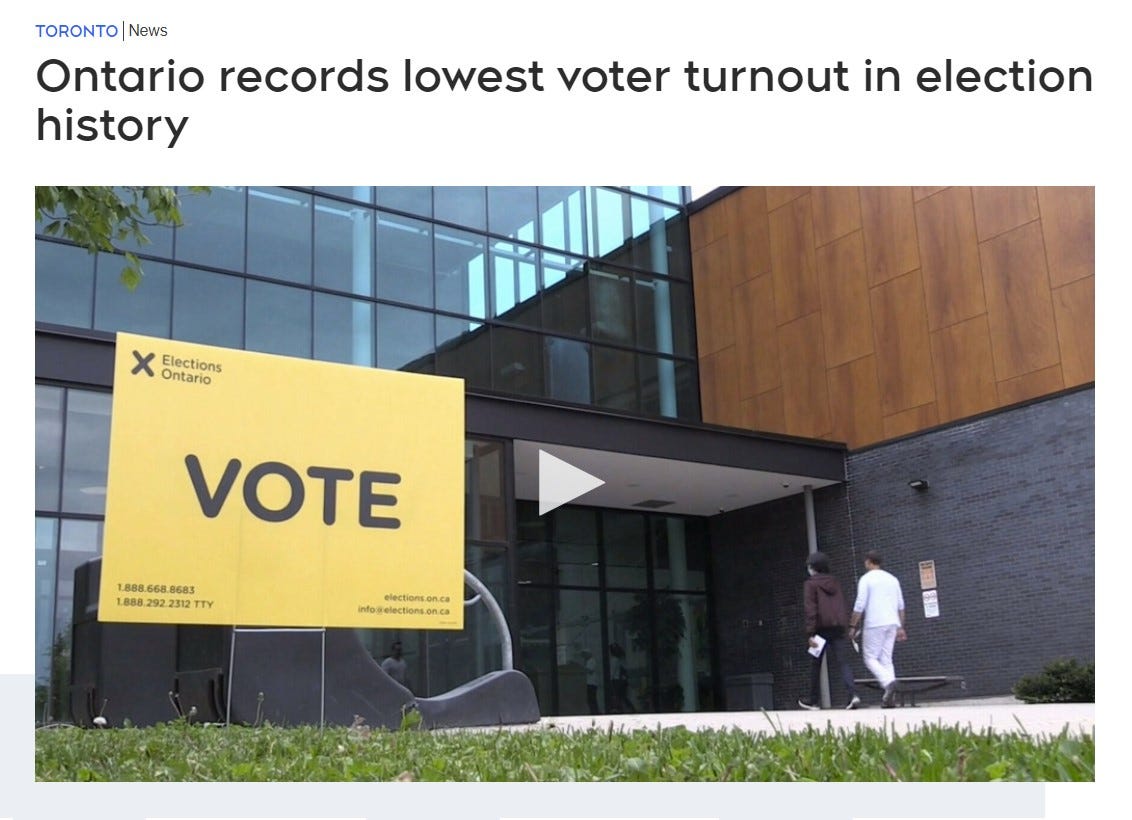
Despite this strategic success, a result the ONPC party worked towards for their entire first term, Ontario media helpfully suggested a variety of other reasons why Ontarians didn’t go to the polls, and quoted the same aligned political scientists over and over.
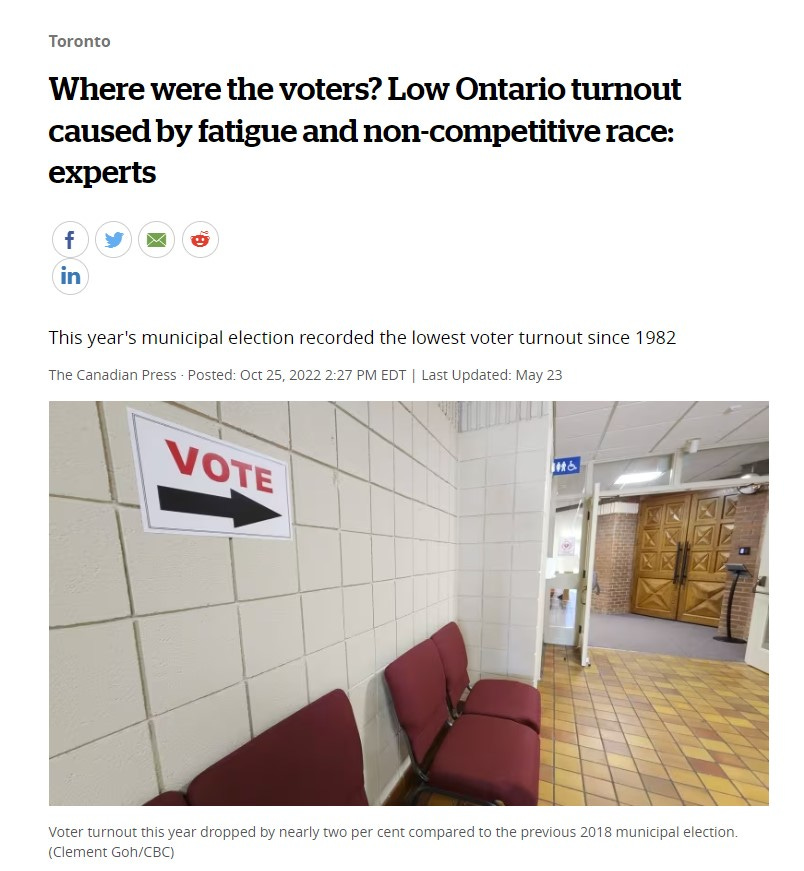
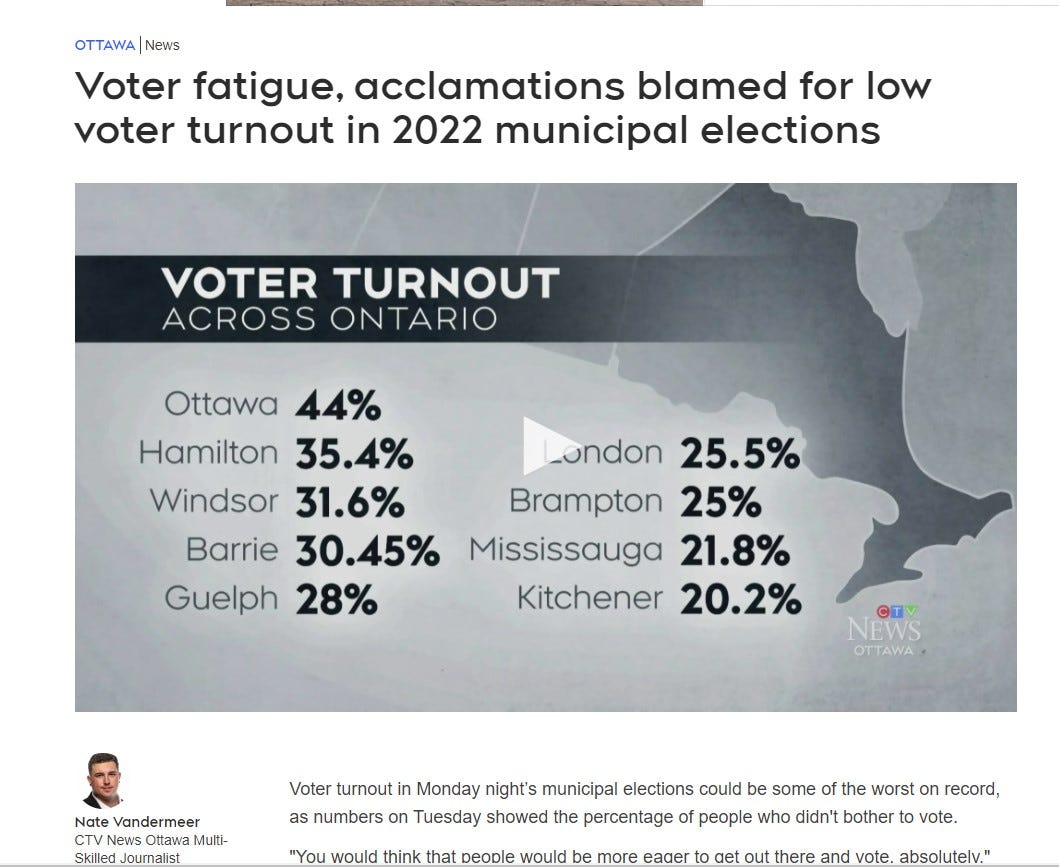
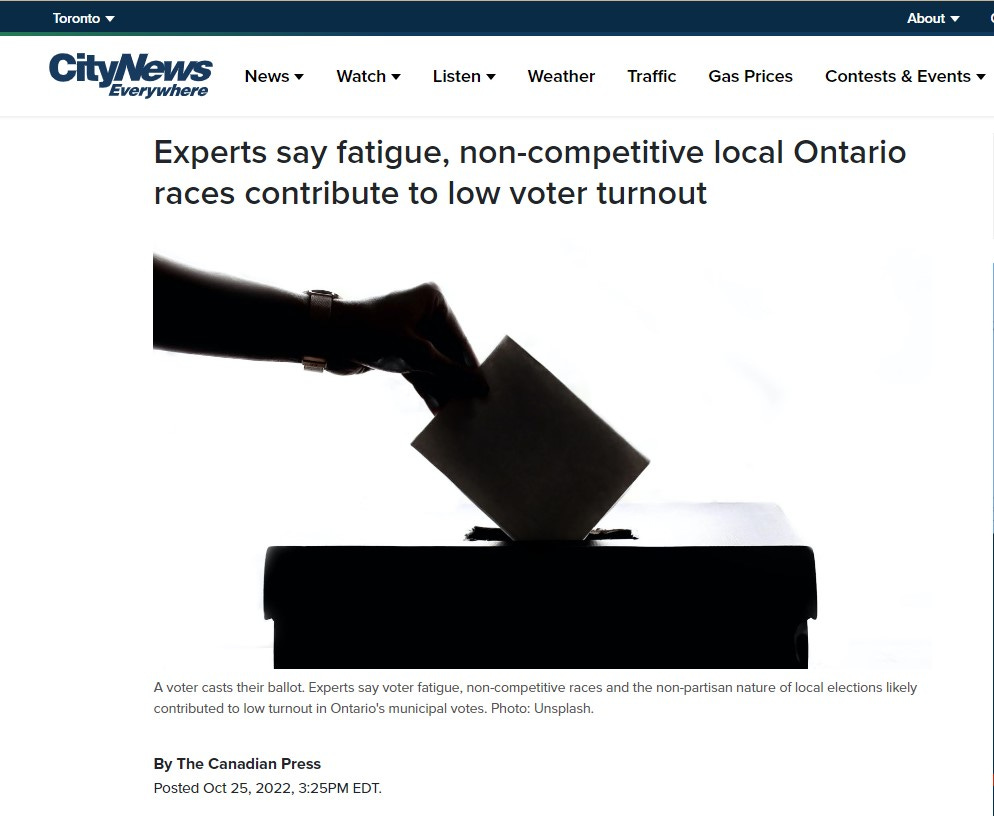
What was even less examined by media and pundits in the aftermath of the lowest voter turnout ever was the wide variety of other voter suppression tactics in play, in addition to the silencing of third party advertisers via the notwithstanding clause. Like the “layers of protection” we heard about early in the pandemic, the voter suppression plan also had many layers to ensure a Ford win.
Significantly reduced number of polling stations
Elections Ontario, claiming a need for “social distancing” at polling locations, had 751 fewer voting locations in 2022 than in 2018. In a number of GTA ridings, polling stations were reduced by upwards of 20%, up to 32% in Don Valley North. In Spadina-Fort York, polling stations were cut by 75%, leaving only 29 polling stations as opposed to the 116 stations in the 2018 provincial election.
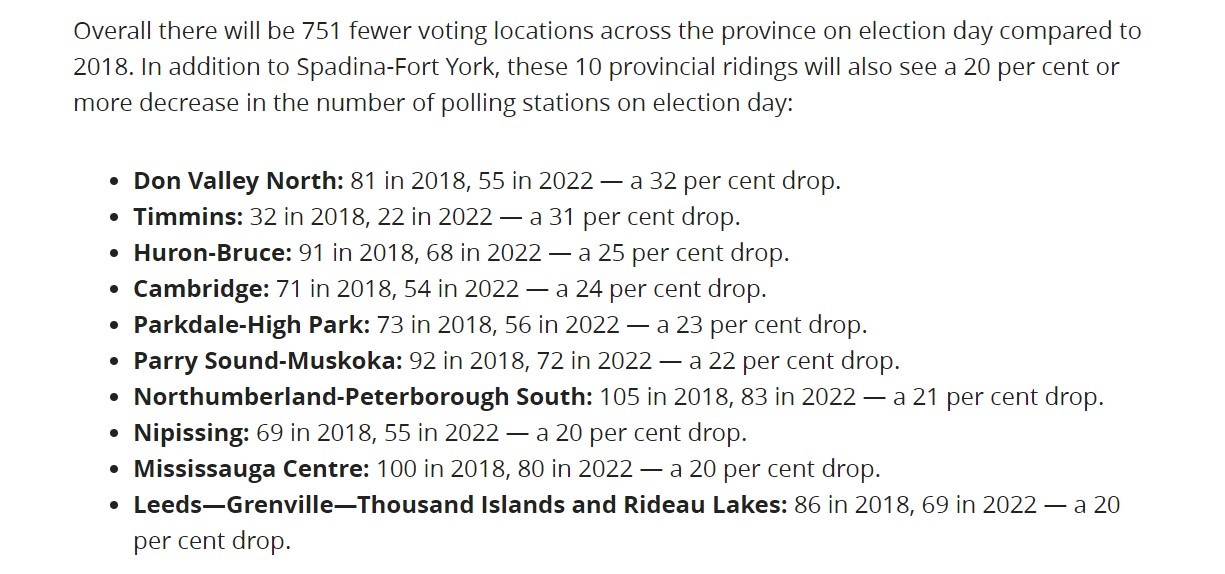
On voting day, would-be voters across the province reported issues and irregularities, including long delays to vote and “electronic registration systems” down, requiring extended voting hours at 27 stations in 19 ridings. Other voters reported their names not on the voting list when they arrived, or being sent to a different location once they arrived to vote.
Elections Ontario’s electronic data system, used by parties to inform their get-out-the-vote tactics on election day, was down for much of election day. The data didn’t begin to flow until 2:00 PM, leaving just a few hours before polls closed.
Voter suppression via media coverage of rigged polling
Perhaps the biggest voter suppression support for Ford’s government came from “pollsters” and Ontario media. For weeks in advance of the election, Ontario news and media outlets ran “poll results” that indicated Ford had a lock on a majority.
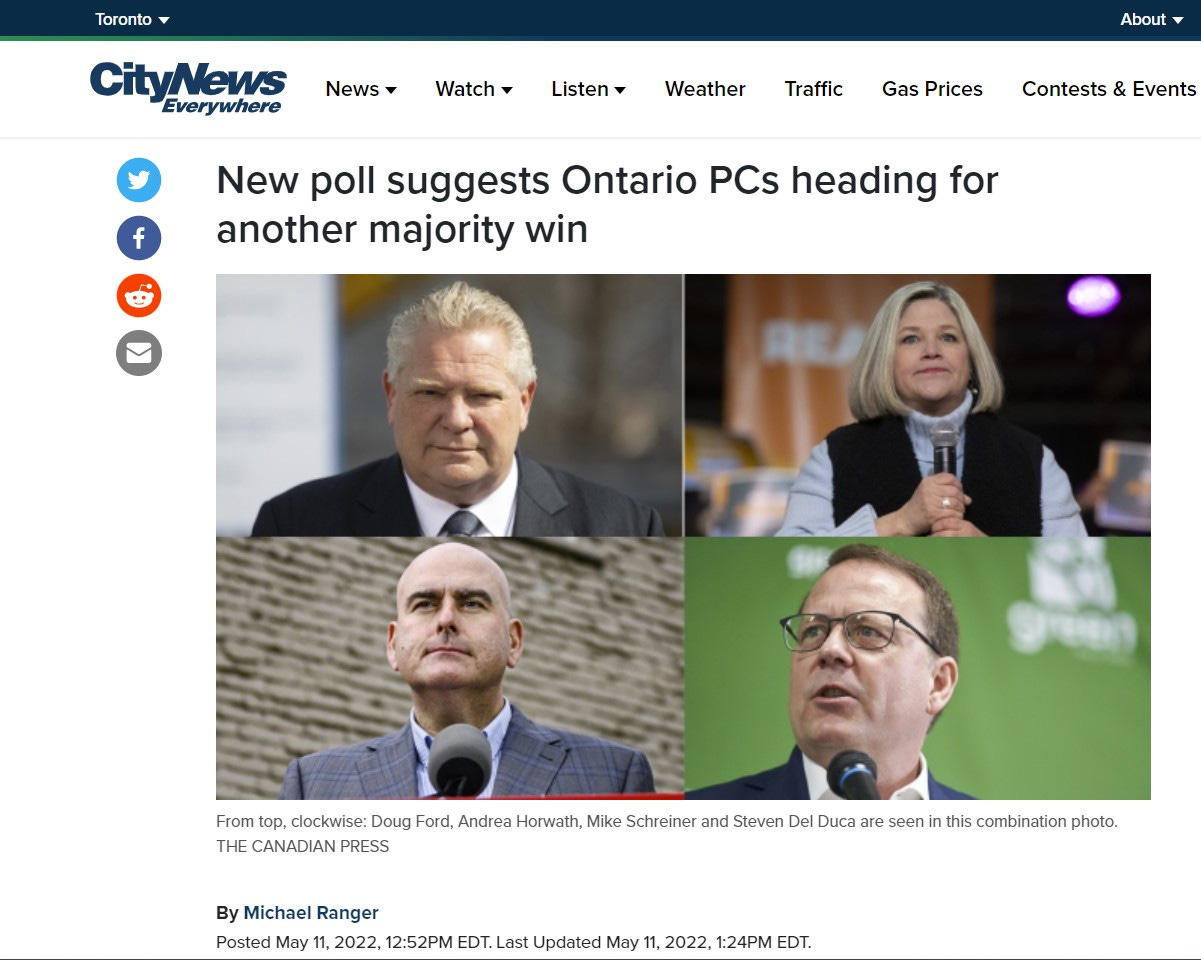
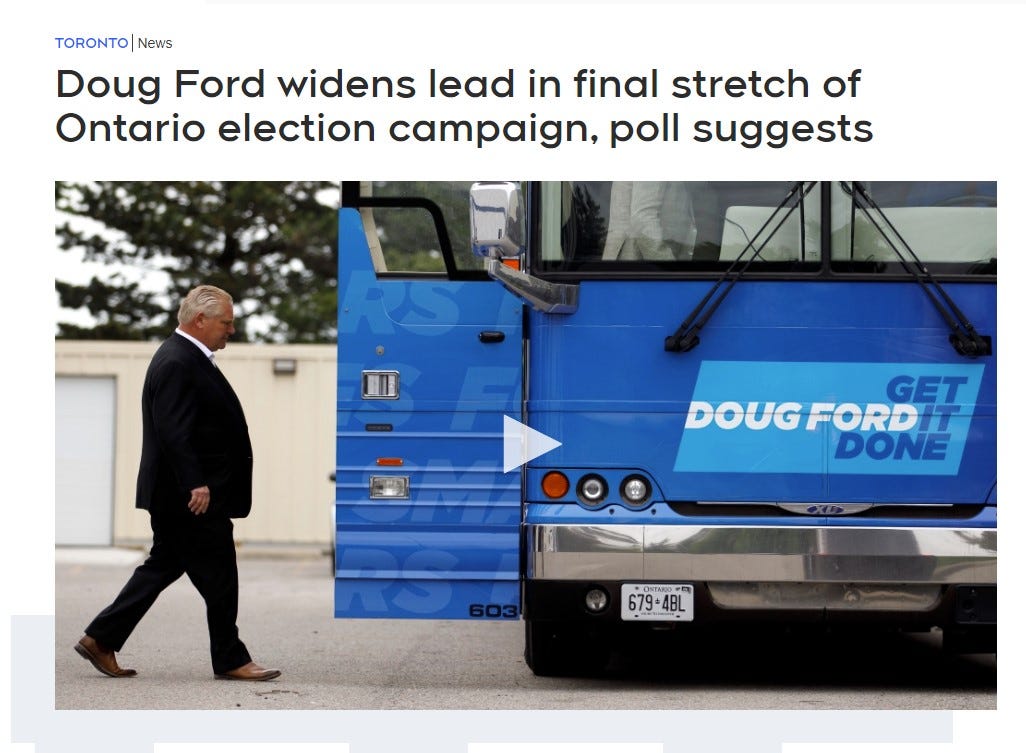
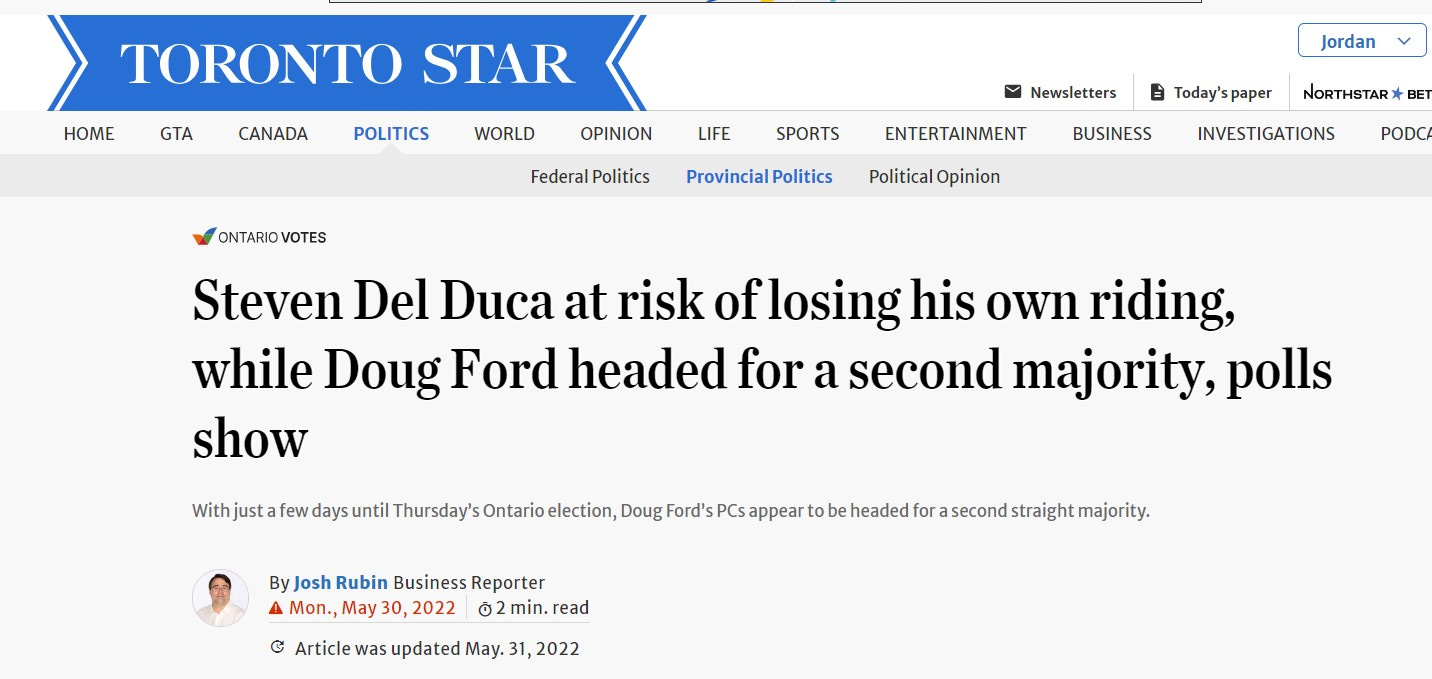
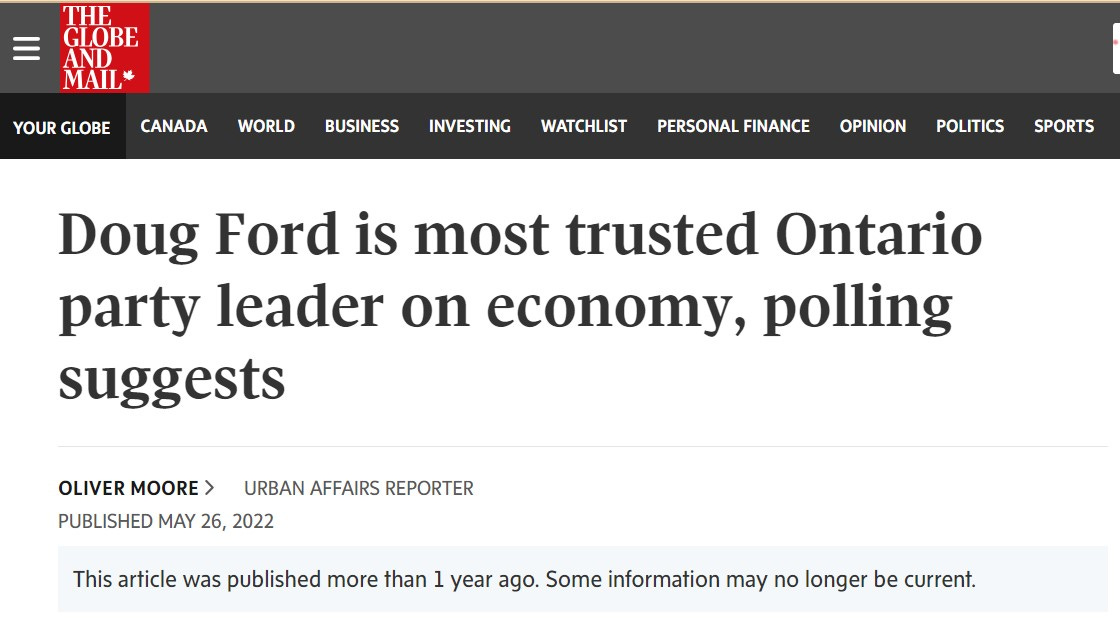
This enthusiasm amongst Ontario media for running dubious polling with weak methodology was despite Ontario “pollsters” being heavily affiliated with the PC Party in Ontario. (In the case of political operative Nick Kouvalis, he is both a political campaign operative and pollster at the same time.)

Almost a year after the election, Elections Ontario itself mused about banning the publication of polling “results” in the final weeks of the campaign. But, to date, no such changes have been implemented. As the Toronto mayoral race indicated, the pollsters have continued to put a PC-friendly spin on their polls, and Ontario news outlets continue to be happy to run them.
Corruptario by Jordan Roberts & Friends is a reader-supported publication. To receive new posts and support my work, consider becoming a free or paid subscriber.
